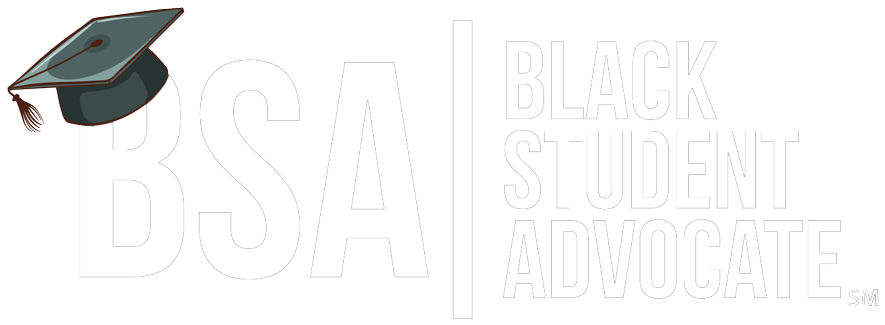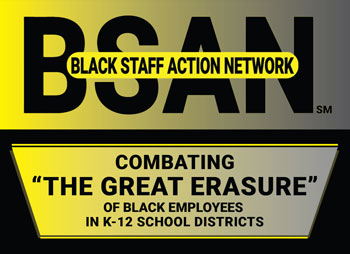At The Black Student Advocate Network, our mission is rooted in the belief that students thrive when their voices are heard, honored, and equipped with the tools for meaningful self-expression. When educators and school leaders intentionally build a classroom culture that centers advocacy for students, they create stronger learning communities and more equitable outcomes.
This comprehensive blog explores why advocacy for students matters and outlines six practical, research-backed strategies to help teachers build a classroom community where every student feels empowered to speak up, participate actively, and champion their own success.
1. Understanding Advocacy for Students: What It Really Means
Before educators and schools can effectively foster a culture of self-advocacy, it’s important to clearly understand what advocacy for students actually entails.
Self-advocacy is not about defiance—it’s about empowerment.
It is the ability to:
- Recognize one’s own needs
- Communicate those needs clearly
- Make informed decisions
- Ask for help when needed
- Stand up respectfully for one’s rights
- Set personal academic and social goals
In many classrooms, the traditional model has centered on compliance rather than expression. Students were often expected to follow rules quietly and avoid questioning directions. But modern education recognizes that silence does not equal success.
Why Self-Advocacy Matters Today:
- Develops confidence. Students learn that their voice has value.
- Builds independence. They become active problem-solvers, not passive receivers.
- Supports academic achievement. Students who ask for clarification perform better.
- Reduces inequities. Marginalized students gain tools to navigate barriers.
- Prepares for life. Self-advocacy is essential in college, the workplace, and beyond.
For Black students and other students of color, the ability to advocate for themselves is especially critical in systems that have historically underserved them. The Black Student Advocate Network emphasizes that empowering student voice creates more equitable and just learning environments.
2. Why Advocacy for Students Leads to Stronger Academic Outcomes
A student who knows how to advocate for themselves is more than a participant—they are a partner in their learning.
Stronger Student Engagement
Advocating for oneself requires active participation. When students speak up about what they understand—or what they don’t—they become more engaged and invested.
Increased Academic Confidence
Students who practice self-advocacy are more likely to:
- Approach teachers with questions
- Request clarification
- Seek tutoring or extra help
- Ask for accommodations
- Participate in group work
- Express ideas even when unsure
This confidence directly improves performance.
Improved Teacher-Student Relationships
When students articulate their needs, teachers are better equipped to support them. Open communication builds trust, which leads to a healthier classroom environment.
Reduces Misunderstandings and Behavioral Issues
Students who lack self-advocacy skills may withdraw, act out, or internalize frustration. Teaching these skills proactively creates smoother communication pathways.
Promotes Social-Emotional Learning (SEL)
Self-advocacy is deeply connected to SEL competencies such as:
- Self-awareness
- Self-management
- Relationship-building
- Responsible decision-making
This holistic development leads to stronger academic growth overall.
3. Teaching Students to Recognize Their Needs and Strengths
One of the first steps in fostering advocacy for students is teaching learners to understand themselves. Students cannot advocate effectively if they don’t know what they need.
Help Students Identify Their Strengths
Teachers can use:
- Reflection journals
- Learning style inventories
- Strengths-based assessments
- Classroom discussions about personal interests
Students learn to recognize what they bring to the table.
Teach Students to Identify Their Struggles
Normalize struggle as part of learning. Encourage students to reflect on:
- Which tasks are hardest
- What creates confusion
- What support helps them thrive
- When they feel overwhelmed
Build a Language of Self-Understanding
Young learners especially need sentence frames such as:
- “I need help with…”
- “I learn best when…”
- “I feel confused when…”
- “I understand better if…”
These phrases empower students to articulate needs respectfully and clearly.
Normalize Conversations About Growth
Teachers can build routines such as:
- Weekly check-ins
- “Glow and grow” reflections
- Goal-setting exercises
- Learning conferences
By creating regular opportunities for students to examine their progress, teachers help them become emotionally intelligent, self-aware learners.
At The Black Student Advocate Network, we advocate for strength-based approaches that affirm students—particularly Black students—by celebrating their cultural identity, resilience, and unique contributions in the classroom.
4. Creating a Classroom Culture That Normalizes Student Voice
A culture of self-advocacy must be intentionally crafted. Students will not speak up in environments that feel unsafe, punitive, or inequitable.
Here’s how educators can cultivate such a culture:
Model Self-Advocacy
Teachers can demonstrate advocacy by:
- Asking questions when unsure
- Voicing their own needs respectfully
- Explaining how they solve communication challenges
Students learn best when they see adults practicing what they teach.
Encourage Questions
Shift classroom norms by:
- Praising curiosity
- Allowing pauses in lessons for student input
- Creating anonymous question channels
- Asking students, “What questions do you have?” instead of “Any questions?”
Celebrate Student Voice
Use bulletin boards, class discussions, and learning showcases to highlight student ideas.
Build Equity-Centered Participation Structures
Traditional participation methods can unintentionally silence some students. Instead, incorporate:
- Think-pair-share
- Small-group discussions
- Written response options
- Student-led discussions
- Culturally responsive practices
Create a Safe and Trauma-Informed Learning Space
When students feel emotionally safe, they speak up more often. This includes:
- Respecting identities
- Using affirming language
- Avoiding punitive discipline
- Practicing restorative approaches
- Being mindful of bias
A strong classroom community—one that affirms Black students and all marginalized students—is a key mission of The Black Student Advocate Network.
5. Teaching Communication Skills That Strengthen Self-Advocacy
Self-advocacy is rooted in communication. Students need explicit instruction in how to express needs clearly and respectfully.
Teach Students How to Ask for Help
Many students remain silent simply because they don’t know how to ask for support. Teach them:
- What types of help they can request
- When to ask
- How to phrase requests
Examples include:
- “Could you explain this part again?”
- “I need more time to finish this assignment.”
- “Can I work with a partner to understand this better?”
Role-Play Real Scenarios
Provide practice situations like:
- Talking to a teacher about grades
- Asking for accommodations
- Sharing concerns about group work
- Requesting clarification
Role-play helps students internalize the skills.
Teach Assertiveness vs. Aggressiveness
Advocacy should always be respectful. Students learn to:
- Use a calm voice
- Maintain eye contact
- Listen actively
- Express needs without blaming or demanding
Create Tools That Support Communication
Such as:
- Help request forms
- Sentence starter posters
- Reflection sheets
- Email templates
- “I statement” guides
Students need practical tools to begin advocating confidently.
6. Empowering Marginalized Students Through Advocacy: A Commitment to Equity
Advocacy for students is also a racial equity issue. Black students and other students of color disproportionately experience:
- Lower expectations
- Biased discipline practices
- Fewer leadership opportunities
- Limited access to advanced classes
- Misinterpretation of behavior as defiance rather than communication
This makes self-advocacy not just a skill, but a form of empowerment.
How Teachers Can Support Marginalized Students
- Validate students’ lived experiences.
- Interrupt bias in the classroom.
- Be mindful of tone, assumptions, and disciplinary responses.
- Offer consistent encouragement to participate and share perspectives.
- Ensure curriculum reflects students’ identities and cultures.
Use Advocacy to Close Equity Gaps
When Black students, disabled students, English language learners, and other marginalized groups are taught self-advocacy skills intentionally, they gain tools to navigate systems that often overlook them.
The Role of The Black Student Advocate Network
Our organization champions the belief that every student—especially Black students—deserves access to adults who affirm their identity, uplift their voice, and invest in their ability to advocate for themselves.
Through training, coaching, community engagement, and educational resources, The Black Student Advocate Network promotes equity-centered advocacy strategies that strengthen schools, empower families, and transform student outcomes.
Conclusion
Advocacy for students is not a luxury—it is a necessity. When students learn to understand their needs, voice their concerns, and take ownership of their learning, they grow into confident, capable, and empowered individuals. A classroom culture rooted in self-advocacy supports academic achievement, emotional resilience, equitable participation, and lifelong success.
For educators, the work begins with intentionality:
- Building strong, trusting relationships
- Teaching communication skills explicitly
- Encouraging reflection and confidence
- Centering equity and student identity
- Creating safe learning spaces where every voice matters
At The Black Student Advocate Network, we believe that when students are empowered to speak, they are empowered to succeed. By prioritizing advocacy for students, we create a future where every learner—especially those historically marginalized—can stand proudly in their truth, own their education, and shape their own path forward.







Share This Page